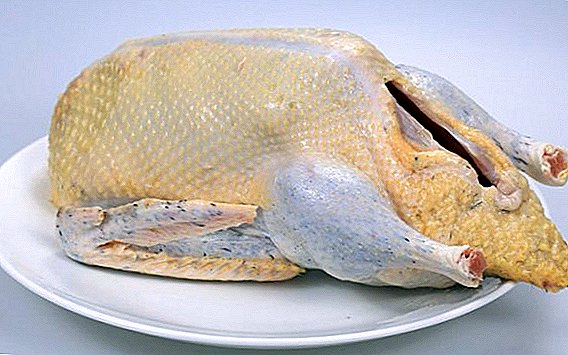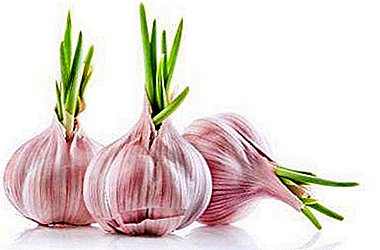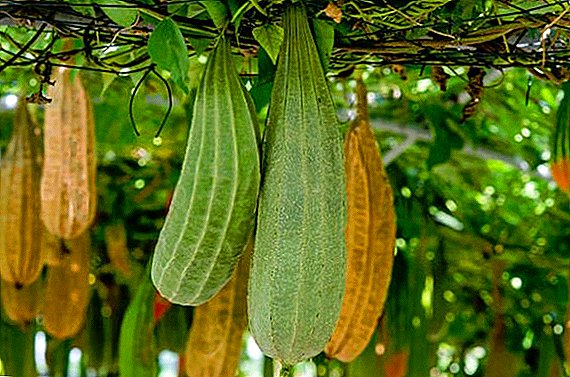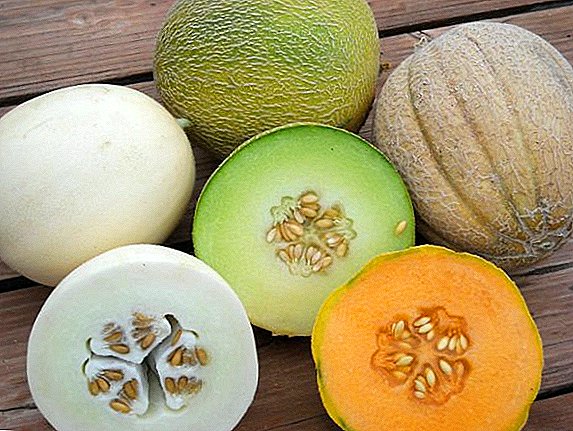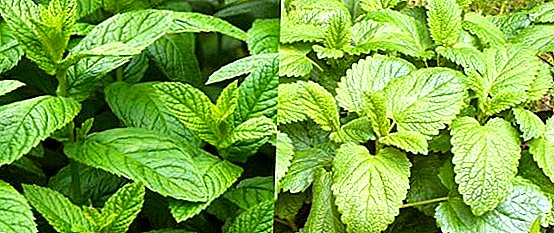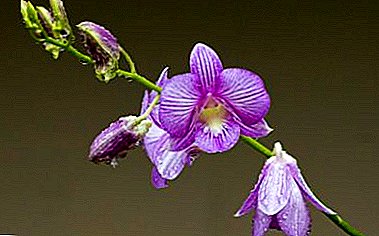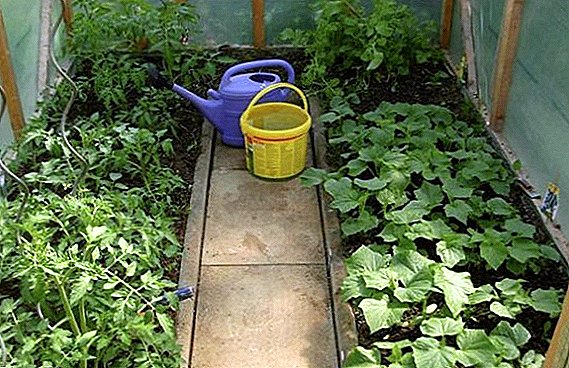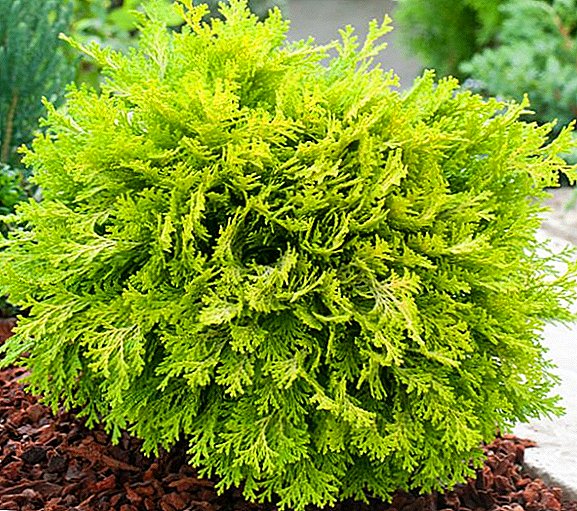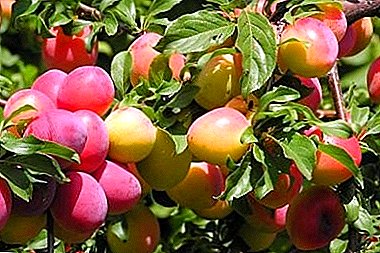
Variety Skoroplodnaya is quite popular in Russia, is of great importance in agricultural production.
It enters early in fruiting and brings good yields.
It also has abundant flowering, but it is self-infested and requires planting a number of pollinating trees.
Description of plum "Skoroplodnaya"
Tree low, but with a spherical and sprawling crown of average thickness, reaches a height of not more than two and a half meters.
Shoots red-brown, skeletal, smooth and shiny, medium thickness. Kidney rejected from escape.
Leaves light green small, like a peach: elongated, wavy. Leaves no pubescence, smooth on both sides.
 Flowers white, arranged on bouquets, three flowers from one bud, each having slightly closed petals, 24 stamens, calyx-shaped calyx.
Flowers white, arranged on bouquets, three flowers from one bud, each having slightly closed petals, 24 stamens, calyx-shaped calyx.
During the flowering period, it will eclipse all the trees in the garden, and it usually always blooms before its fellows. The tree blooms in early May, differing in this period with a fluffy crown, almost completely covered with color. Flowers can bloom before the leaves, sometimes at the same time.
Fruit small, round red-orange color with a waxy bloom, without pubescence. On one tree, fruit shades can vary from yellow, bright orange to red. At the base of the fetus funnel is almost invisible.
Plums Sit on a short stalk, have a mild abdominal suture. When the plums ripen, it seems as if they are sitting close to the branch, as if “sticking” around it. One plum weighs about 30 g. The skin is thick and thick. The flesh is yellow, juicy, medium density, with fine fibers. The bone is small, oval.
To taste, the plums are sweet and sour with a fragrant melon flavor. Plum is rich in vitamin C.
A photo
The following are photos of Skoroplodnaya plum:




Breeding history and breeding region
Chinese plum was brought first to America, where it gained great popularity. Chinese plums were brought from the USA to Europe, including Russia, where numerous varieties were derived from it by hybridization.
The variety was bred by crossing of the Sino-American hybrid plum, Climex, with the Ussuri red, by pollination of the flowers of the first tree with pollen from the second. The variety Enikeev H.K. and Satarov S.N.
This plum can grow in the northern Moscow region.
Characteristics of a variety
Plum begins to bear fruit in the second year. The variety is high-yielding. From one tree you can collect about thirty kilograms of plums. Trees live up to twenty years.
Sort self-infertileneed cross-pollination. In this regard, the variety is very capricious, homemade plum varieties will not be suitable for pollination. The best pollinators for will be the varieties of hybrid cherry plum and Red ball.
For cross-pollination is better to plant in the garden varieties that bloom at the same time.
According to maturity, the variety is early, unlike home plums. Ripen fruit in mid-July - early August.
The flesh is poorly separated from the bone.
Frost grade tolerates wellIn the absence of a thaw, the tree can withstand temperatures up to 40 degrees.
Skimpy plum - universal dessert variety, transporting normally. You can store at low temperature for a long time. You can also freeze it for the winter. Fresh fruits are used as food, as well as compotes, juices, jams, marshmallows, or souffles.
For long-term storage, collect the plum a little under-ripened and store it in boxes, laid out with paper, in a dark, cool place.
Planting and care
Care Chinese plum same as home. Plant plum both in spring and autumn. But in the middle lane, autumn seedlings can freeze slightly.
 Plum reproduces well with the help of pits.
Plum reproduces well with the help of pits.
The soil is chosen fertile, friable, they get rid of weeds. Planted in the sunny side.
The young plant is watered often enough, and the adult is less often, but the amount of water is doubled.
In dry times, you need to water frequently.
Watering should be moderate: if the tree lacks moisture, the fruits will become shallow, and if the plant is poured, the leaves will turn yellow.
Required trimming for uniform fruiting of the branches. Shoots growing inside the crown to be pruned, the rest - shorten, leaving 70 cm for better growth.
After 2-3 years, they begin to apply mineral and organic fertilizers to the stem. In the spring, when intensive growth begins, nitrogen fertilizers are applied. They contribute to the intensive growth of the tree. In the autumn they make organic and phosphorus-potassium fertilizers.
In the period of great ripening of fruits, they are thinned, which can be done even before their ripening. Branches that begin to fall from the load, need support.
Diseases and pests
In central Russia, Chinese plum can often suffer from root swelling. To prevent this from happening, the variety is grown by grafting on a tall stem. Graft Chinese plum on winter-hard plum molds.
It is prone to typical plum diseases - moniliozom and klyasterosporiozom. To fight these diseases, spraying is done in early spring, before bud break 3% of Bordeaux liquids.
 Plum can be affected by fruit rot and pests such as moth and aphid. The moth is a caterpillar.
Plum can be affected by fruit rot and pests such as moth and aphid. The moth is a caterpillar.
She eats away from the fetus to the handle, making it difficult for him to receive nutrients.
To save the tree from the moth, they dig up the soil near the tree in the fall and lay it with sacking. And insects are collected by hands and destroyed, so that they could not spend the winter.
To prevent aphids from eating, spraying of chemicals in the spring is carried out: nitrophene, benzophosphate, karbofos.
This is a winter hardy variety. Weakly prone to disease and pest attack. In spring, when buds bloom, the tree adorns the garden with its flowering.
Fruit bright, tasty, juicy, fragrant, long stored and well transported.
Tree need cross-pollination, as the variety is self-infertile. Not all varieties are suitable for pollination of plums. Among the shortcomings can be noted self-infertility varieties, poor separation of bone and flesh. Due to early flowering time Skimpy plum suffers from bark preying at the root of the neck, sunburn.


